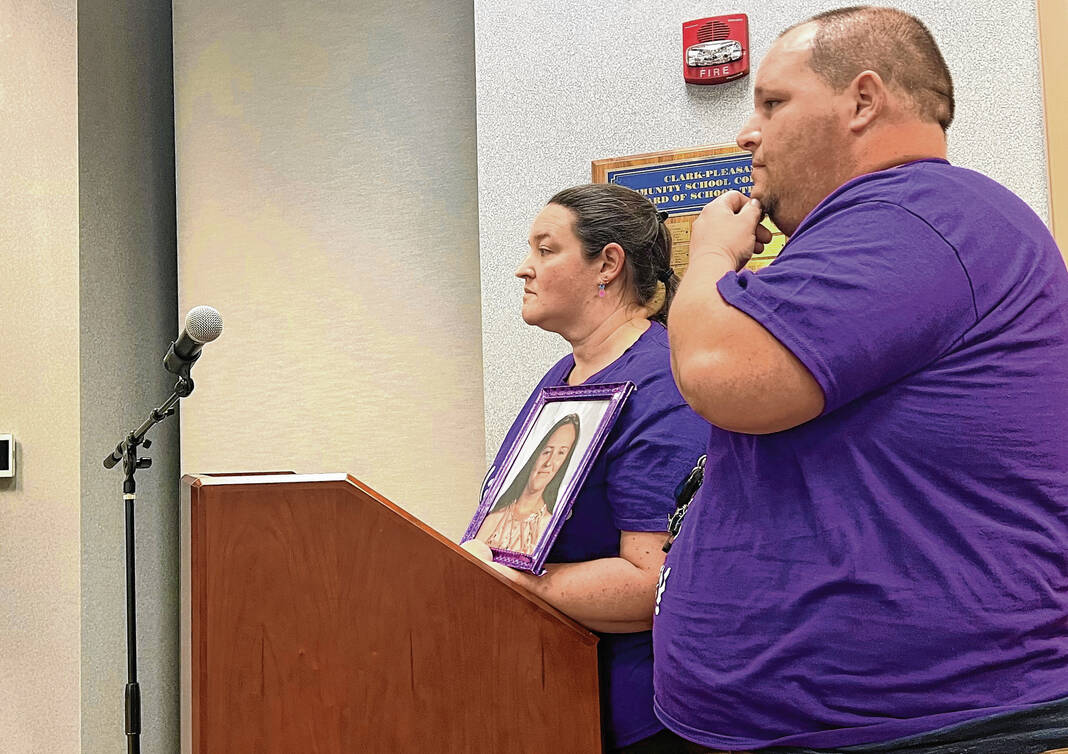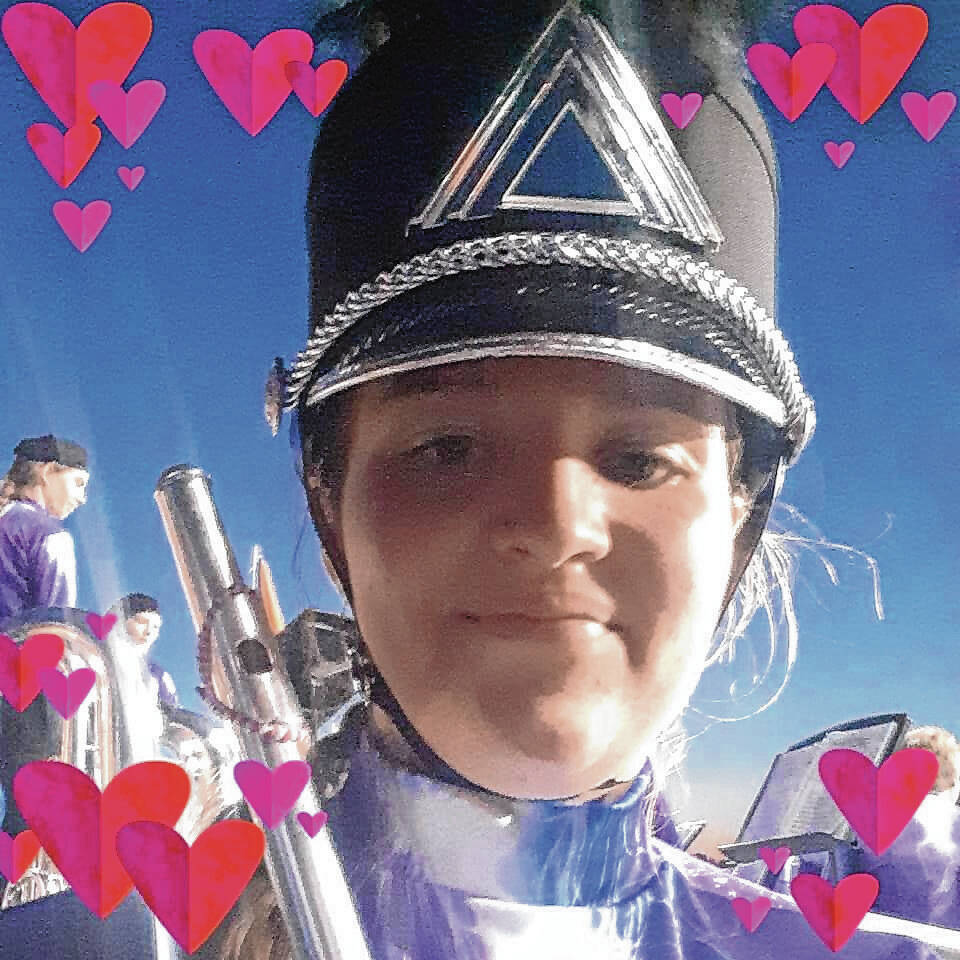Clark-Pleasant’s new superintendent says plans are in the works to improve Whiteland Community High School’s pool safety, amidst calls for change following the death of a student in May.
Fifteen-year-old Alaina Dildine died on May 16 during her morning physical education swim class at Whiteland Community High School. She was swimming laps with other students when she went under the bulkhead that divides swimming lanes from the diving well, according to a report from the Johnson County Sheriff’s Office. She remained underwater for 52 minutes from 10:18 a.m. until 11:10 a.m., when a student in the next class period discovered her.
Alaina Dildine had epilepsy, and a report from the Johnson County Coroner revealed she had an apparent seizure prior to going underwater. The coroner’s office ruled her cause of death was drowning, and the manner of death was determined to be an accident. Prosecutor Lance Hamner said on Monday his office would not press criminal charges against the teacher and lifeguard who were on duty at the pool during the incident.
Following their daughter’s death, Alaina Dildine’s family has publicly called for change to prevent another tragedy like this from happening at any school. They have released statements, attended Clark-Pleasant School Board meetings and did a TV news interview to spread their message and share their daughter’s story.
“We are still in shock at the loss of Alaina, and we are trying our best not to feel angry … but it is hard. As we continue to mourn, we ask the school corporation to implement new swimming pool policies to keep all students safe, so no other family has to experience such a profound loss,” Alaina’s parents, Kyle and Victoria Dildine, said in a statement released Monday.
The lifeguard on the pool deck during the incident has been fired by the school corporation, according to a statement from the Dildine family’s attorney, Steve Wagner of Wagner Reese, LLP. Clark-Pleasant’s June personnel report shows a lifeguard/instructional assistant at WCHS was terminated on June 8.
Calls for change
At the June 20 school board meeting, friends and family of Alaina Dildine filled in the first three rows of seats in the board meeting room. They all wore purple ribbons in support of Alaina, and some had shirts that read “Alaina’s Army.”
They were there to ask for answers to why the school let this happen, and how it could be prevented from happening again.
Victoria and Kyle Dildine spoke at the podium that evening before the board members and former Superintendent Patrick Spray. Victoria Dildine held a photo of Alaina while they stood there, trying to hold back tears while speaking.
They asked what safety policies were in place for swim classes at the school. They questioned why such a policy could not be found online for the public to view.
In that moment, Spray said the school follows all the state codes for operating pools and training lifeguards. He said there were specific physical education department rules that were not posted online, but he would send them copies of those.
Spray could not answer many of the specific questions the Dildines had, such as the ratio of lifeguards to students in the pool and what specific rules were in place for staff to protect students in the pool. He said he did not know without having the policies in front of him.
“So at this point, it sounds like we’re doing the bare minimum with just what the state requires. We haven’t done any extra precautions?” Victoria Dildine said.
When asked about taking student attendance at the pool, Spray said the school does not have a written policy requiring teachers to take headcounts when students in swim class are in or out of the water. He added it is not uncommon for schools with pools to not have such a policy.
“I’ve asked other pool directors around central Indiana, and they don’t have a secure mechanism with regards to headcounts, etc., as well,” Spray said at the meeting. “That is something as we take a look at policies and procedures that has come up as a point of information.”
Kyle Dildine additionally asked if any action would be taken against the physical education teacher who was in the pool area at the time Alaina Dildine drowned. Spray said that was a personnel matter he could not discuss.
Throughout the rest of the meeting after they spoke, Victoria Dildine sat in the front row, holding the photo of Alaina up for the school board members and Spray to see as they continued regular business.
The Dildine family has declined interview requests at this time.
A one-page policy
A copy of a one-page pool safety rules sheet was provided to the Daily Journal upon request to see what safety policies the school currently has in place for physical education swim classes.
The sheet outlines 15 general pool rules for students, such as no entering the pool without permission from the swim instructor or lifeguard, no running on the pool deck, no “horseplay,” no flipping or cannonballs allowed in the laps section, and no swimming under the bulkhead.
This rules sheet is not publicly available on the school’s website for parents or the public to view.
Copies of the Physical Education 1 Spring 2023 syllabus and a PE 1/PE 2 expectations sheet were also provided. These documents detail requirements students must meet in physical education class to graduate, including a required swimming lesson unit for three to four weeks.
There is one section in the syllabus pertaining to “swimming requirements.” In that section is a list of requirements students must meet, including rules to be on the pool deck no more than five minutes after the tardy bell for class and that students will have 15 minutes at the end of class to dress in the locker room.
The WCHS Pool Rules are posted on Google Classroom and reviewed with students before the swim unit begins, Clark-Pleasant Superintendent Tim Edsell said. Students are also given a questionnaire to fill out about their swimming experience prior to the swim unit.
Clark-Pleasant additionally abides by state laws from the Indiana Department of Health regarding public and semi-public pools. Indiana law details several health rules, such as chlorine levels in pools, cleaning requirements and rules for warning signs on pool decks.
One section in the state code is dedicated to lifeguards, and includes a table for how many lifeguards are required for persons in a pool. According to the state code, one lifeguard is required for up to 75 people in the pool, two lifeguards for 76-150 in a pool, three lifeguards for 151-225 people in a pool, and so on.
State code also outlines the training and certification lifeguards must undergo to work in a public pool.
None of these documents outline policies for school staff on the pool deck to follow during class while watching students. This is the main argument Wagner has made on behalf of the Dildine family. He called the one-page rules policy “rudimentary” and it “did not address any of the concerns expressed by the family.”
Wagner noted in a statement released Monday that “the school does not have any written policies, procedures, or protocols that adequately safeguard students using the pool.”
“For example, the P.E. teacher and lifeguard took attendance at the beginning of class, but they were not required to count the students after they exited the pool,” Wagner said. “Instead, the teacher and lifeguard dismissed the students from the pool haphazardly and then failed to conduct a careful check of the pool after the students exited. As a result, Alaina was not discovered for 53 minutes. Such policies should be standard for any school offering swimming as a P.E. activity.”
Rethinking pool safety
Edsell — who is in his first week on the job at Clark-Pleasant schools — told the Daily Journal the school policy for swimming classes is being revised to be made “more robust.”
Employees at the school district have been working on this since June. The goal is to have the new policy finalized for the upcoming school year, which starts at the end of this month, he said.
“Here’s what I know. We’re looking at our current rules and procedures and protocols, making sure that they are more comprehensive,” Edsell said. “And, again, we’re looking at best ways for more support systems technology related to help make students in the water safer.”
Drowning detection systems are also being looked at for the current pool and the new pool that will soon be under construction with the high school renovation project.
Edsell did not give details on what exactly the school is looking to add. He said there are many options for the short term while the current pool is still open, and for the long term with the new natatorium. Clark-Pleasant’s facilities director is working to get quotes for different systems, Edsell said.
Some drowning detection technology available include systems with overhead and underwater cameras that can detect distressed motions or if someone is submerged for too long in a pool. Another option would be high-tech headbands that swimmers can wear while in the pool that tracks their status, and would send alerts if anyone is submerged longer than what is deemed safe. All the systems available from different companies say their technology sounds alarms within seconds of detecting a swimmer in distress.
All of these options are on the table, Edsell said. The headband technology is a system he mentioned as possibly being an option for the current pool, with a bigger system for the new pool.












